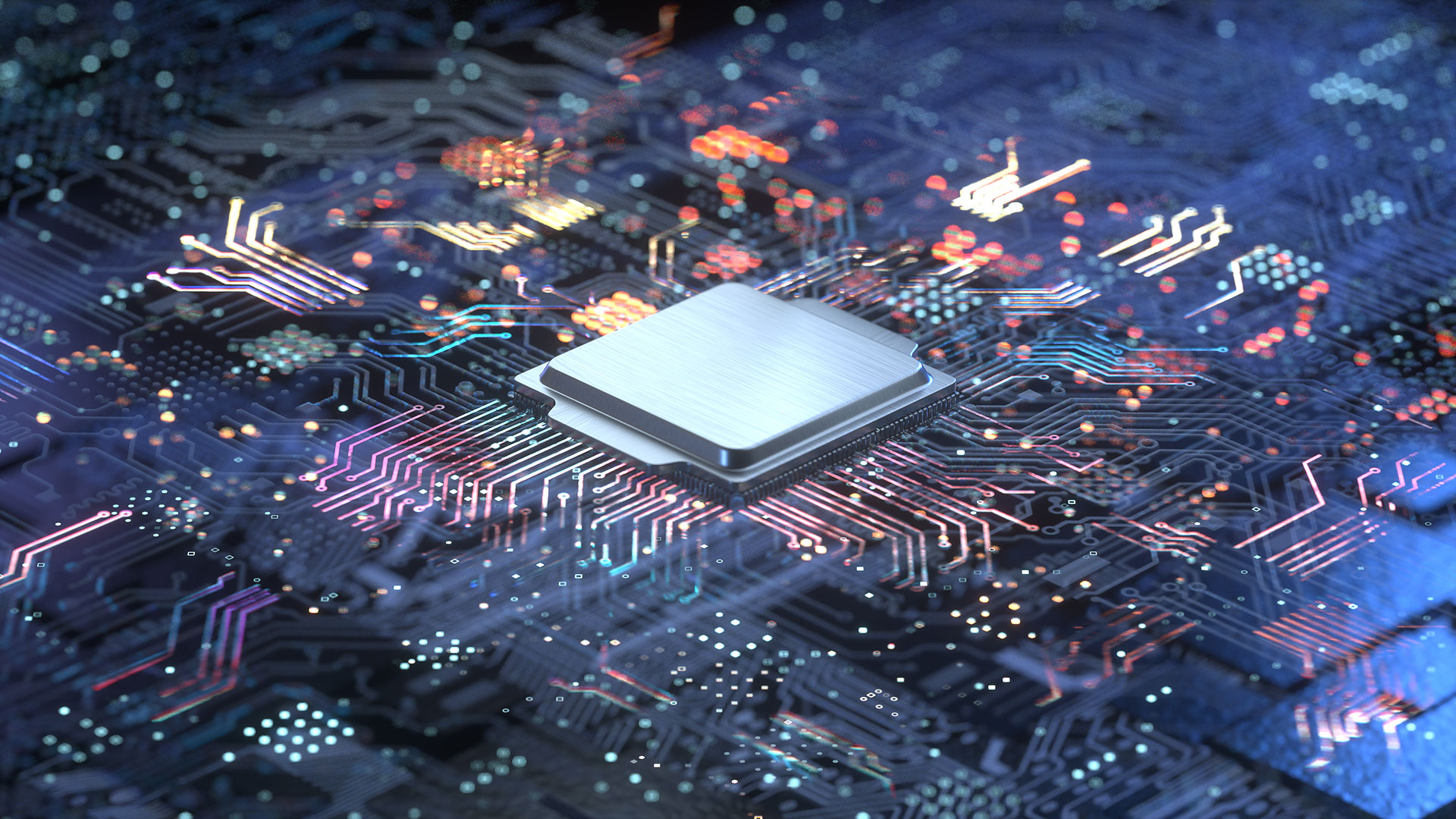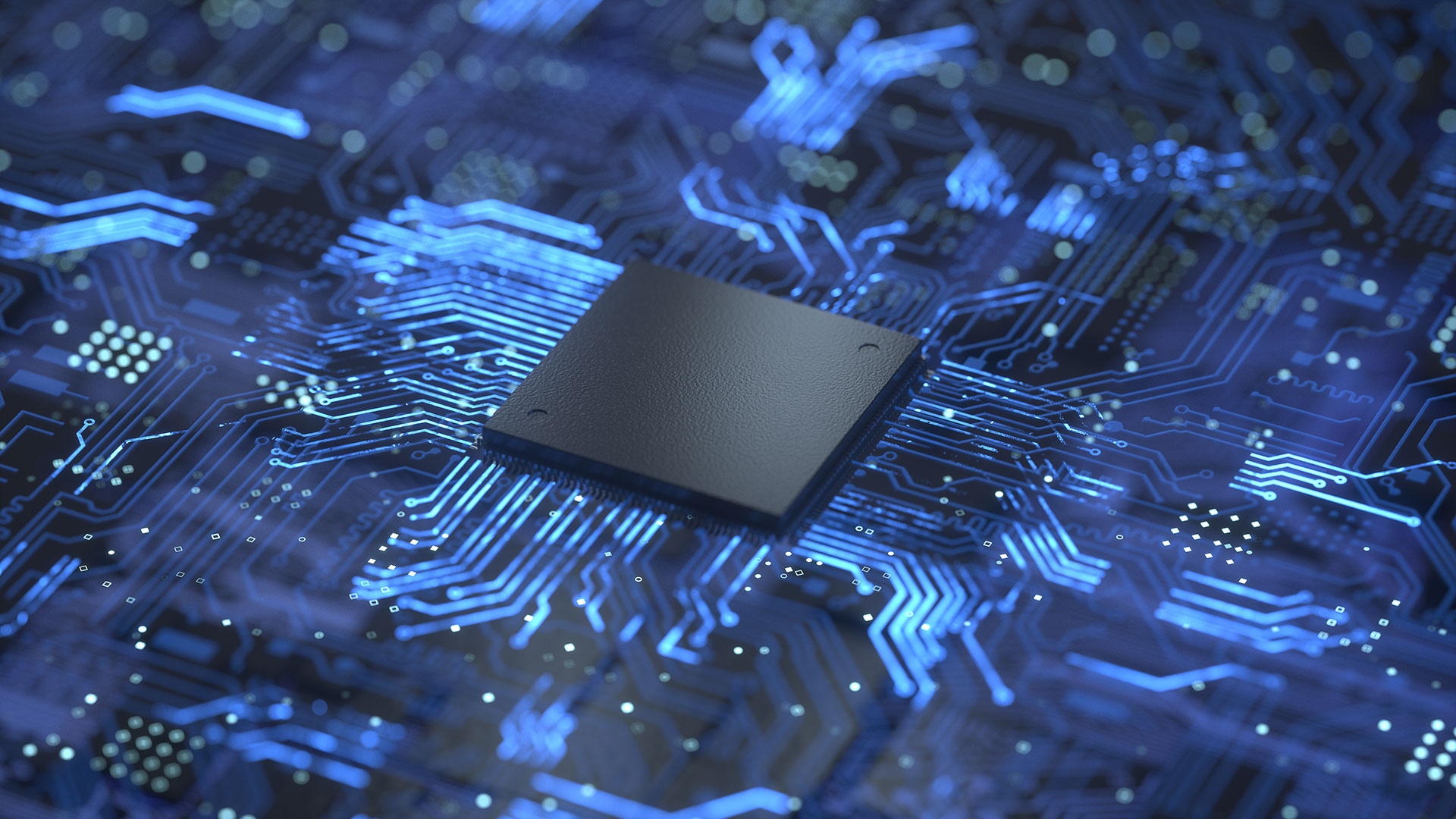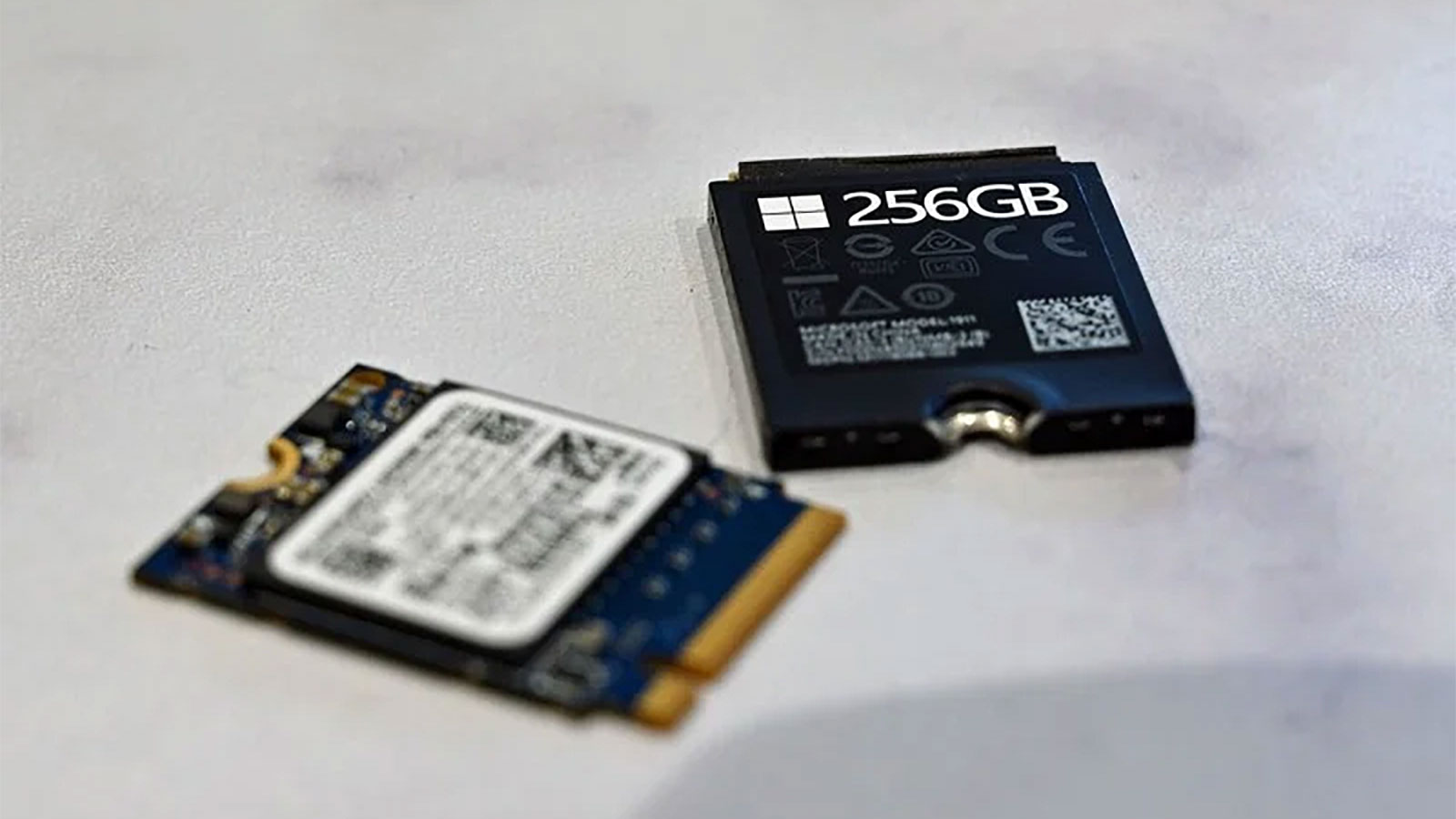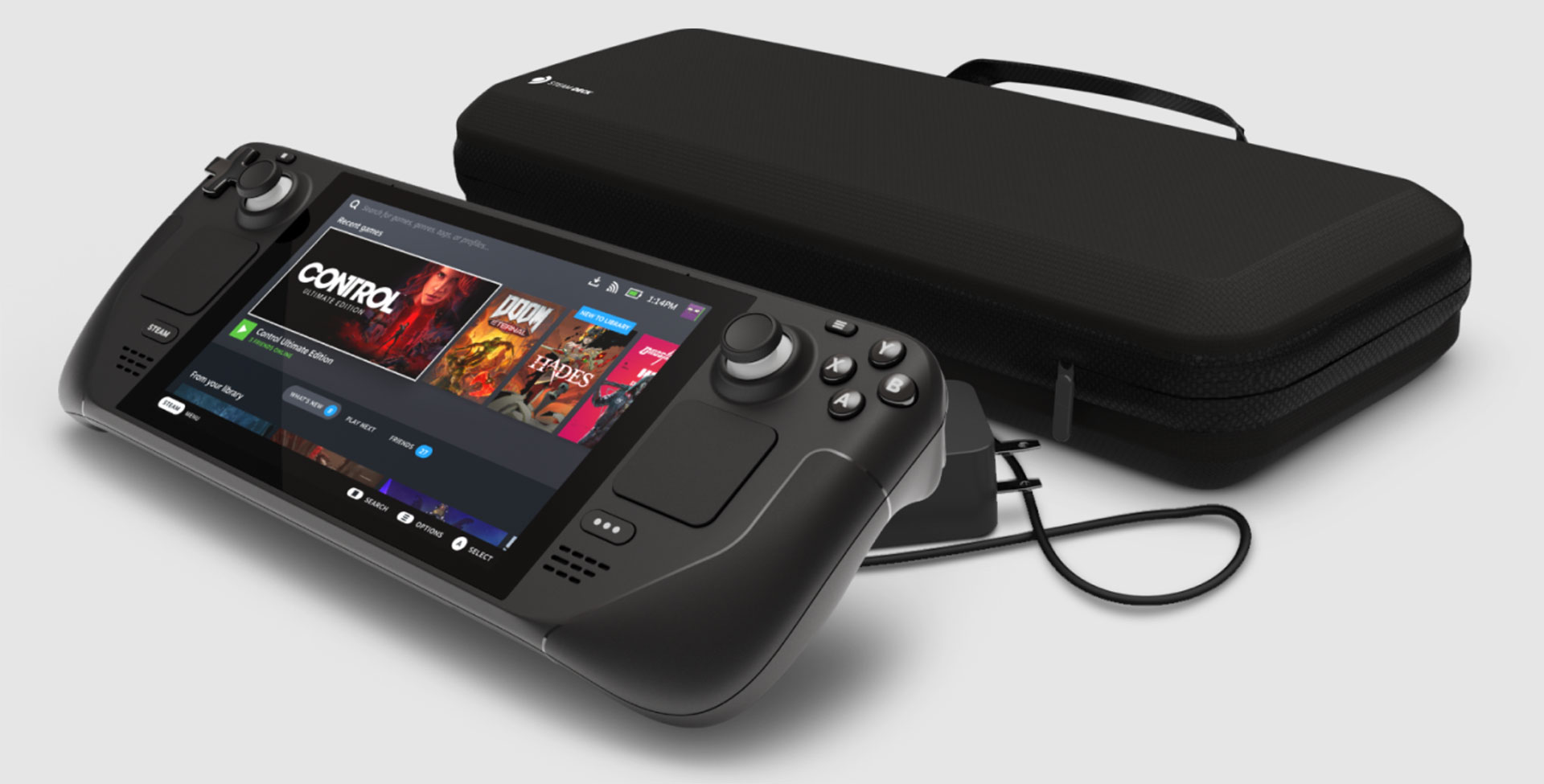Steam Deck Hardware Analysis: Expect Potent 720p Gaming
The Steam Deck’s GPU should do at least 30 fps at 720p on almost any title.
With Valve's Steam Deck now officially unveiled, including all the major core specifications, it's surprising just how much there is that we still don't know. It seems like a well designed little handheld, and compared to the Nintendo Switch hardware, it's easy to get carried away with just how much faster and more potent the Steam Deck should be. The problem is that where the Switch runs games custom designed for the hardware, the Steam Deck has a massive backlog of PC games that definitely weren't built with a handheld device in mind. As such, the hardware might not feel nearly as fast as we'd like. Or at least, that was our initial concern, but after poking around at some lesser GPUs and APUs, we're confident that the Steam Deck will be able to handle just about any game at its native 1280x800 resolution.
We've put together some thoughts and estimates on the Steam Deck hardware to discuss where it might land in terms of performance and experience. We won't know for certain until the actual hardware comes out, but that's still months away and as we've already reported, there are scalpers trying to sell their reserved units for as much as $5,000. That's too much, full stop. Even if Valve's first generation handheld ends up a runaway success, which is far from certain, the hardware simply isn't worth anywhere near that much. Theoretical performance looks iffy at best when compared to modern PC hardware, but that's an unfair comparison, so let's dig a little deeper.
Steam Deck CPU
The Steam Deck has a lot of interesting stuff going on in the hardware and software departments. Fundamentally, it's PC-type hardware, just with a custom handheld form factor and a few bits and pieces that don't currently have a direct PC equivalent. We could easily put together a PC that should deliver similar or better performance than the Steam Deck, albeit without the handheld and mobility aspects. Take the CPU, for example, a 4-core, 8-thread Zen 2 design running at 2.4–3.5GHz. The closest direct comparison to that right now is the near-mythical Ryzen 3 3300X, a potent little chip that was so good and so cheap that AMD didn't want to make enough of them, so it doesn't show up in our list of the best CPUs. That CPU should easily outperform the Steam Deck CPU, given the significantly higher 65W TDP, but it's not going into handheld devices. While the CPU might feel like a bit of a throwback to the days of 4-core processors ruling the market (thank you, AMD, for helping to put an end to that), it's plenty potent for the target market. There are a few close competitors right now, with somewhat similar CPUs. The Aya Neo uses a 6-core, 6-thread Ryzen 5 4500U 15W APU. The GPD Win3 uses an i7-1165G7 or i5-1135G7, both of which are 4-core, 8-thread Intel chips, and the OneXPlayer also uses the i7-1165G7. A Zen 2 CPU should be at least comparable to those options. Why not Zen 3, though? That was erroneously listed in the initial specs reveal, and Zen 3 generally has better throughput than Zen 2. Except, a lot of that stems from the reworked CCX (core complex) and L3 cache layout, which previously added extra latency on communication between different cores. Zen 3 has an 8-core native CCX, while Zen 2 had a dual 4-core CCX topology. For a native 4-core monolithic design with integrated graphics, then, Zen 3 might not matter all that much for performance. There's also an interesting aside from the AMD perspective, showing the flexibility of AMD's current designs. Here we have a new product using a Zen 2 CPU design from 2019, coupled with AMD's latest RDNA2 GPU architecture (more on that in a moment), and paired with an LPDDR5 memory interface. It's not entirely clear if this is being made on TSMC N7 (probably), but we basically have three generations of AMD IP in use: last generation CPU, current gen GPU, and future gen memory controller, all in a highly integrated SoC. That's pretty awesome from a technology perspective.
Steam Deck GPU and RAM
The GPU side of the equation takes priority for any gaming device, and here's where Valve should easily take the lead. Steam Deck will utilize an 8 CU (compute unit) RDNA2 architecture GPU. That means it can technically do hardware ray tracing, but the performance of the chip in such workloads will almost certainly fall somewhere between abysmal and awful. 8 CUs simply isn't enough for ray tracing, even at the device's native 1280x800 resolution. We're talking about a 512 core graphics chip, clocked at 1.0–1.6GHz, with a maximum theoretical performance of 1.63 TFLOPS — a paltry figure compared to the best graphics cards.
The Steam Deck also uses 16GB of LPDDR5 memory running at 5500 MT/s. That's shared between the CPU and GPU, but it's actually not too shabby. With a quad-channel (32-bit per channel) 128-bit memory interface, that's 88 GBps of bandwidth, more than any other integrated graphics solution has used to date (not counting the PlayStation 5 or Xbox Series X, since those aren't really PCs). Of course, good for integrated graphics isn't the same as even a low-end desktop chip.
To give some perspective, AMD's low-end RX 560 has 16 CUs running at 1.275 GHz, which equates to a theoretical 2.61 TFLOPS. Plus it has a dedicated 4GB of GDDR5 memory providing 112 GBps of bandwidth. I fully expect an RX 560, which came out in May 2017, to deliver better gaming performance than the Steam Deck, but that's not really the point — no one would try to make a handheld using the RX 560.
There are a couple of wild cards that we need to address, to clarify things. First, the RDNA2 architecture should be a major boost to performance and efficiency. 1.6 TFLOPS of RDNA2 might not be that far off the 2.6 TFLOPS of RX 560. Except the other potential bottleneck is that the Steam Deck APU has a maximum power draw of 15W for both the CPU and GPU, and that will definitely limit the performance potential. How much? That's the real question.
Again, looking at competing handhelds, the Steam Deck should easily outclass any of them. Intel's Tiger Lake i7-1165G7 does beat AMD's Vega 8 in integrated graphics performance, but Vega is a relatively old architecture. We know from the RX 5000 series launch that AMD was able to boost performance per watt by about 50%. RX 6000 further improved performance, though some of that comes thanks to the Infinity Cache, which we're not sure the Steam Deck APU will use. Still, we could easily see up to 75% higher performance from RDNA2 in a 15W TDP than we currently get from Vega 8 15W.
With AMD's latest GPU architecture plus a healthy amount of memory bandwidth, the GPU in the Steam Deck is arguably one of its strongest points. Again, keep your expectations in check — this isn't a chip designed for running 1080p at maxed out quality settings — but most games should run quite nicely with the right combination of settings. Hopefully that's something Valve can help with, selecting 'good' default settings in games so that the end user experience is streamlined.
Steam Deck Storage
This is arguably the weakest link for the Steam Deck. The base model Steam Deck comes with 64GB of eMMC storage, while the upgraded models come with 256GB or 512GB of M.2 NVMe storage. There are some other extras as well, but $130 extra for an SSD that could potentially be had for under $40 won't win any praise from me. I consider 512GB to be barely adequate these days — that's a $250 upgrade, for an SSD that should definitely cost less than $100 (here's one for $55 for example). Considering the base storage performance will be quite modest, and SD cards aren't likely to be particularly fast either, Valve likely isn't using extreme performance SSDs on the upgraded models. Power and heat would also be a concern with higher performance storage.
The Steam Deck uses M.2 2230 storage for all models, though, which drastically limits the potential options on storage. 512GB M.2 2230 SSDs choices consist of… well, basically there's the Toshiba BG3 and BG4 models, and Valve is hopefully using the latter. There are 1TB BG4 drives available, like the Kioxia KBG40ZNS1T02. That's the same SSD used in the Surface Pro X, and likely what Valve is using in the Steam Deck, except not in 1TB form.
Valve says the SSDs aren't designed to be user upgradeable, but enterprising people will almost certainly try to find a way. However, the Toshiba BG3 and BG4 models use host memory buffer (HMB) technology, which sets aside a predefined amount of system memory (~38MB) for the SSD’s use for its internal flash management. This feature is supported in the NVMe specification, but Valve could use a custom implementation for the Steam Deck, meaning it’s possible that standard SSDs won’t work as intended. Also, note that tearing down a small handheld tends to be far more difficult than tearing down even a laptop, never mind a desktop that's basically like Lego by comparison.
The bigger issue is going to be game size and overall storage capacity, but let's quickly discuss potential storage performance. Given the relatively limited built-in storage, a lot of users will want to put games on different SD cards. We've seen with Raspberry Pi testing just how much of a difference a good SD card can make, and there's a massive gulf between the fastest and slowest SD cards. On the bright side, or at least less gloomy side, the SanDisk Extreme 256GB microSD card only costs $50, with read performance that tops out at 90 MBps. SD card speed ratings are a bit of a mess, and you'll find UHS-I cards labeled "UHS-3" even though what they really mean is U3 speed grade — a very different beast. The Steam Deck supports UHS-I SD, SDXC, and SDHC, however, which basically means maximum performance tops out at around 100 MBps.
How will the experience on the Steam Deck change when using a game on an SD card compared to the internal storage, particularly on the 512GB model? Load times will almost certainly increase, and the wrong SD card could be horrible. Imagine loading a few gigabytes of data at 30 MBps for example, or even 15 MBps. If you go the SD card route for expansion, you'll want to select faster options, and that's certainly something we want to test once the Steam Deck ships.
Capacity is still our biggest concern, however. Many games on Steam now consume more than 100GB of storage. What will the Steam Deck do with these massive games? GTAV currently uses 98GB — too big for the base model. Destiny 2 is also too large, at 66.1GB, and Borderlands 3 tips the scales at 123GB. Plenty of other games will fit — Counter-Strike: Global Offensive needs 25GB, for example — but even modest size games would be limited to somewhere between one to three games on the base model Steam Deck. Or you could put on more than a dozen older games that only need <4GB. Which leads us into the final core hardware element.
Steam Desk Display
The Steam Deck comes equipped with a 1280x800 display. It's a bonded IPS panel with 400 nits brightness, so it should work pretty well, though only the 512GB model comes with a "premium anti-glare etched glass" upgrade. It's a 7-inch display, with relatively large bezels, but there aren't many options for this form factor. We would have loved to see an OLED display as a potentially better choice, like the new Switch OLED, but maybe that will be a Gen 2 upgrade.
The choice of screen resolution does influence other areas, like storage. Obviously, there's no need for 8K, 4K, or even 2K texture packs on a device that only has a 1280x800 display. Will Valve do some work to reduce the install sizes of games on the Steam Deck? I certainly hope so, since otherwise it could get filled up frustratingly fast even on the 512GB model. But custom versions of games for the Steam Deck would require a lot of work, and sort of defeat the "just take your regular Steam games with you" mentality. Only larger studios would likely bother with creating reduced storage requirement installations of their games, but at least you can skip the HD texture packs when those are an optional download.
Back to the performance side of things, that 1280x800 resolution display will do wonders for frame rates on the relatively modest (for PCs) GPU. Even 1920x1080 at medium to high detail settings can be too much for most integrated graphics solutions, at least with the more demanding games. 720p on the other hand is viable even on Intel's integrated graphics solutions. The Steam Deck won't be saddled with the slowest of the slow integrated graphics, however, which means 1280x800 at medium to high quality settings should be well within reach for nearly any current game.
As an example, we've seen performance testing on the Aya Neo and GPD Win3 that shows Borderlands 3 and other games hitting more than 60 fps. With a faster GPU than either of those existing handhelds, the Steam Deck shouldn't have any trouble playing games at 30 fps minimum, and will probably break 60 fps with the right settings. Docking the Steam Deck and using it with an external display, however, will require lowered expectations. Maybe 1080p will work fine in some games, but there will be plenty of situations where 720p will be a better goal.
Initial Thoughts on the Steam Deck Hardware
Without actual hardware in hand, we can't say for certain how the Steam Deck will feel or perform. It's obviously not going to match modern desktops, or even gaming laptops, in performance. It also doesn't need to. There have been several attempts to make a decent Windows gaming handheld PC, with varying levels of success. Valve isn't bothering with the Windows part, at least not really (look at Steam Proton for more details), but it definitely wants to give PC gamers a new way to use their existing libraries.
My first thoughts on the Steam Deck hardware left me feeling underwhelmed. Graphics performance will probably land somewhere between Nvidia's GT 1030 GDDR5 and AMD's RX 560, neither of which impress me much. It should be a clear step up in performance from AMD's Vega 8 integrated solution, but again, that's not at all a fast gaming chip. I mention those specific GPUs because I actually have performance results for them, and looking at how they fare compared to even budget hardware like the GTX 1650 (well, theoretically budget — let's hope prices continue to drop on GPUs) makes them look like a terrible idea.
But that's all from a desktop PC perspective. I've been running those GPUs (and a few others) at 1280x720 low settings as well as 1920x1080 and medium settings to see how they stack up. Let me start with the latter, just because it should help put things in perspective.
Across a suite of 17 games, at 1080p and 'medium' settings (or rough equivalent), AMD's Ryzen 7 4800U — that's a 15W Zen 2 solution with Vega 8 graphics — averaged just 26 fps. Some games are very much playable, like CSGO running at 93 fps. Others are borderline, for example Fortnite managed just 32 fps in our test, with dips and stutters into the teens. Actually, only two other games I tested (Forza Horizon 4 and Strange Brigade) average more than 30 fps on the 15W Vega 8 solution. Nvidia's GT 1030 GDDR5 was about 13% faster overall — still not very good for 1080p medium gaming. But the RX 560 4GB card felt like an entirely different beast, averaging nearly 50 fps across our test suite. More importantly, there were only a few games (Cyberpunk 2077, Microsoft Flight Simulator, and Metro Exodus) where the RX 560 couldn't average at least 30 fps at 1080p medium.
That might sound bad, but remember that was at 1920x1080 — 2.25 times as many pixels as 1280x720, and twice as many pixels as 1280x800. Also remember that there's a reasonable chance the Steam Deck could deliver close to RX 560 levels of performance. Dropping the quality and resolution pushed nearly every game well above 30 fps, even on the Vega 8. Cyberpunk 2077 and Flight Simulator remained the two exceptions, but conservatively I think the Steam Deck's processor will be at least 50% faster than the Ryzen 7 4800U I used as a comparison point. GT 1030 GDDR5 was also borderline in those same games, but the RX 560 had no issues with any of the games I tested, many of which are pretty demanding. All of the games broke 30 fps, and 12 of the 17 tested games averaged more than 60 fps.
Even with some very demanding games, slower-than-Steam Deck hardware did quite well at 720p, and a faster AMD APU will do even better.
And before anyone tries to point this out, yes, I realize several of the games I tested (we'll cover the full suite in a future article) aren't on Steam and thus wouldn't be available to run on the Steam Deck regardless of performance — at least not without wiping it and installing Windows, which we're not sure will be possible. That's not the point. The point is that even with some very demanding games, slower-than-Steam Deck hardware did quite well at 720p, and a faster AMD APU will do even better.
The controls and interface for games will likely be more of a hurdle than the performance — though I am still concerned with the limited storage capacity and potential for storage bottlenecks. If the Steam Deck can do what the Steam Machine failed to do, namely, build a market for a new type of Steam gaming experience, there's a ton of potential. Look at the Nintendo Switch, which has comparatively pathetic hardware. It's basically Nvidia's Shield Tegra X1 SoC, and yet there are a ton of gamers and games for the platform that you don't see anywhere else.
Could the Steam Deck open the doors for new experiences? Well, maybe not new relative to the Switch, but definitely new compared to many existing PC games. It represents a much lower tier of hardware capabilities than a desktop PC, but in a form factor that lets people go anywhere. We're excited to see the gyroscopes and other controller aspects put to good use as well. There are still so many unknowns — would Valve dare to make a game specifically for the Steam Deck, for example? — but if the installed user base is high enough, we could see not just Valve but also other game developers target the device. Hopefully those games will also still work on regular PCs as well, but we'll have to wait and see.
Right now, I'm cautiously optimistic. Yes, Valve has a questionable history when it comes to hardware. Even if Steam Deck gains enough traction, there will likely be an even better Gen2 model down the road — OLED and even faster processors would be easy updates. Pre-orders for the Steam Deck certainly went fast, but we don't know how many people will actually buy the devices once they ship, or how many people in total put in a reservation. We'll know a lot more in about five months, but given the demand for PC gaming handhelds on IndieGogo, there's undoubtedly an untapped market. Hopefully, the Steam Deck can do a better job at servicing these users than previous PC handheld attempts.
Get Tom's Hardware's best news and in-depth reviews, straight to your inbox.

Jarred Walton is a senior editor at Tom's Hardware focusing on everything GPU. He has been working as a tech journalist since 2004, writing for AnandTech, Maximum PC, and PC Gamer. From the first S3 Virge '3D decelerators' to today's GPUs, Jarred keeps up with all the latest graphics trends and is the one to ask about game performance.
-
cknobman I think you are being overly pessimistic in regards to the performance this little machine will be capable of.Reply
Think of the Xbox One and PS4 and what they were capable of.
This little handheld has over twice the processing power and more graphics power than either of those machines.
Plus its targeting a lower resolution.
I think this little machine will do wonders for serious handheld gamers and give us the capability to game on the go with a lot of PC games.
I do agree the storage is concerning but hopefully Steam/Valve does implement some kind of smart distribution that gets rid of all the high res texture packs that would take up space and never be used.
I preordered a 256gb version.
I dont think there is a game currently in my Steam library (except maybe Breakpoint??) that this little handheld wont play just fine. -
husker User interface matters. It matters a lot. It's one of those things that, if it is done right, gamers won't even notice -- but if done poorly is a total disaster. Since PC games are not designed for a handheld device, I think no matter how good the hardware is, the user experience will just feel sub-par. Devices like the Switch have games designed for the Switch so even if Steam Deck's FPS and resolution and storage space are superior, that all fades into the background if the overall user interface feels forced.Reply -
hotaru.hino Reply
Steam already has Big Screen Mode which delivers the so-called 10-foot UI experience. The screencaps of what they showed look like a more tailored version of that. The games themselves are of course hit or miss, but a lot of games I've played that were released in the past 5+ years have excellent support for controllers and Steam itself is compatible with basically every controller from the major players. Plus the Deck has a touchscreen, which anything that uses point and click works just fine with (though precision is going to be lacking).husker said:User interface matters. It matters a lot. It's one of those things that, if it is done right, gamers won't even notice -- but if done poorly is a total disaster. Since PC games are not designed for a handheld device, I think no matter how good the hardware is, the user experience with just feel sub-par. Devices like the Switch have games designed for the Switch so even if Steam Deck's FPS and resolution and storage space are superior, that all fades into the background if the overall user interface feels forced. -
-Fran- I think Microsoft will be looking at this experiment from Valve reaaaaally close.Reply
And I do agree with most of the points in the article, except that RDNA2 is going to leave Vega in the dust. I'm pretty sure it will be a step up, but I wouldn't say it's going to leap-frog it as you're thinking. There's a reason why AMD is still using Vega in the current APUs. I do find strange not using Zen3 though, but given the real performance difference in the mobile APUs and CPU components, for this environment, I think it's fine to go with Zen2; it was probably cheaper as well, so they could leverage RDNA2 and DDR5 as well. And I have a hunch this could be using TSMC's 7nm node, but I wish they're testing 6nm with it.
Cautiously Optimistic indeed.
Regards. -
JarredWaltonGPU Reply
I'm not sure you're reading our thoughts properly.cknobman said:I think you are being overly pessimistic in regards to the performance this little machine will be capable of.
Think of the Xbox One and PS4 and what they were capable of.
This little handheld has over twice the processing power and more graphics power than either of those machines.
Plus its targeting a lower resolution.
I think this little machine will do wonders for serious handheld gamers and give us the capability to game on the go with a lot of PC games.
I do agree the storage is concerning but hopefully Steam/Valve does implement some kind of smart distribution that gets rid of all the high res texture packs that would take up space and never be used.
I preordered a 256gb version.
I dont think there is a game currently in my Steam library (except maybe Breakpoint??) that this little handheld wont play just fine.
From the intro: "As such, the hardware might not feel nearly as fast as we'd like. Or at least, that was our initial concern, but after poking around at some lesser GPUs and APUs, we're confident that the Steam Deck will be able to handle just about any game at its native 1280x800 resolution."
The subtitle: "The Steam Deck’s GPU should do at least 30 fps at 720p on almost any title."
The conclusion: "The point is that even with some very demanding games, slower-than-Steam Deck hardware did quite well at 720p, and a faster AMD APU will do even better."
Compared to a desktop, yeah, it will feel slow. Slower storage, slower CPU, slower GPU, all constrained by the 15W TDP. But for a handheld? It will be plenty fast for properly designed games. So, games targeting hardware that looks like the PS4 or Xbox One, with a faster CPU? Yeah, they'll run great. Games like Cyberpunk 2077 that have a lot of NPCs and tend to hit CPU and GPU harder than most other games? They'll land closer to 30 fps. Future games that go after extreme desktop PC performance might have issues. But the vast majority of games should run just fine. -
JarredWaltonGPU Reply
We've tweaked some of the CPU and GPU discussions, but you have to remember that Vega 8 is generally limited to DDR4-3200 memory speeds, plus it's an older and less efficienct architecture. Putting a 16 CU Vega chip into an APU just wouldn't make sense without more memory bandwidth, and the 8 CU RDNA2 architecture could end up with similar requirements. Except, with LPDDR5-5500, that's 72% more memory bandwidth (though probably worse latency). Anyway, my rough seat-of-the-pants math says each RDNA2 CU should be 50–75% faster than a Vega CU. Adding in 72% more memory bandwidth would go right along with that increase in comput performance. If a 50% or more increase in relative performance is "leapfrogging," then I think RDNA2 can do that. But the 15W TDP will likely still limit the improvement, which I probably should have made clearer.Yuka said:I think Microsoft will be looking at this experiment from Valve reaaaaally close.
And I do agree with most of the points in the article, except that RDNA2 is going to leave Vega in the dust. I'm pretty sure it will be a step up, but I wouldn't say it's going to leap-frog it as you're thinking. There's a reason why AMD is still using Vega in the current APUs. I do find strange not using Zen3 though, but given the real performance difference in the mobile APUs and CPU components, for this environment, I think it's fine to go with Zen2; it was probably cheaper as well, so they could leverage RDNA2 and DDR5 as well. And I have a hunch this could be using TSMC's 7nm node, but I wish they're testing 6nm with it.
Cautiously Optimistic indeed.
Regards.
As for Zen 3 vs. Zen 2, I think that's far less of a concern. The big changes with Zen 3 revolve around using a unified 8-core CCX and 32MB L3 cache. This chip will only have a 4-core CCX and probably 8MB L3 or something (it might be 16MB). So, that kills off most of the Zen 3 advantage. Plus it's a monolithic design with integrated graphics, which means it needed more space for the GPU and video stuff. The LPDDR5 interface might have also increased relative die size over a DDR4 interface.
Overall, though, it still looks impressive. It should easily beat any of the other current generation handhelds mentioned in the article, like Aya Neo and GPD Win3. It will also inevitably have much higher volumes than those handhelds, and hopefully better design elements, plus even the 512GB model costs about half as much as the base model Win3. And yet, it's also still double the price of a Switch, more or less. Success is by no means guaranteed, but it could be good. Maybe. LOL -
excalibur1814 Is this insanity?Reply
A 'gaming' hand-held... 720p and 30fps. Repeat that last little bit... 30fps. Gaming. 30fps.
Nah. -
maik80 If putting windows on the system won't increase the use of resources, such as ram and even storage?Reply




